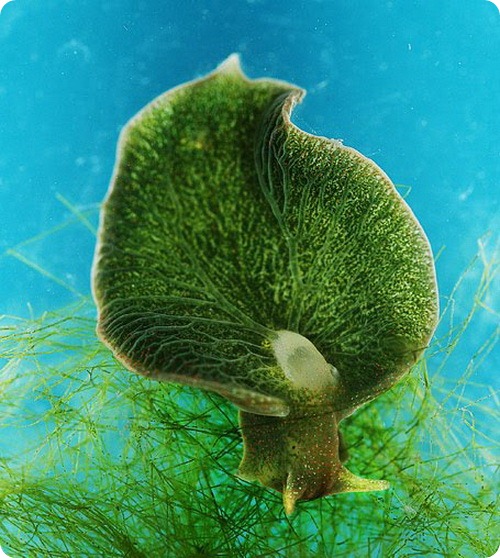Since the 1970s scientists have known that Elysia Chlorotica the
brilliant-green sea slug “steals” chloroplasts from algae V. litorea and embeds
them into their own digestive cells to photosynthesize. The photosynthetic process
provides the slug with all the food it needs by producing carbohydrates and
lipids that nourish it. What scientists have been trying to figure out for so
long with lots of controversy is the answer to why chloroplasts in the slug continued
to photosynthesize for up to nine months. They confirmed that several of the algae’s
genes which are responsible for repairing damage to chloroplasts and keep them
functioning are present in the slug’s chromosomes. The slug has evolved to be
part algae in its DNA where usually there is no way plant genes should work
inside animal cells let alone be in animal genes.
This slug can bring on new
answers towards creating genetically modified animals that can photosynthesize.
That can be very useful for small animals like slugs that need very little food
and nutrition to survive which can entirely be obtained through photosynthesis.
They would make cute and easy pets to take care of I bet, only needing algae
that grows with little effort, water and sunlight with the benefits of seeing
them move like an animal. Maybe they can
pass the gene on to bigger animals like turtles and we can get a Turtwig. I’m
looking forward to what they can do with this breakthrough. Maybe scientists
can create an entirely new species of plant-animals that are as beautiful as
the brilliant-green sea slug. In the future where life on Earth comes close to
being wiped out by the expansion of the Sun and global warming, who knows how we'll survive or evolve to become.


No comments:
Post a Comment